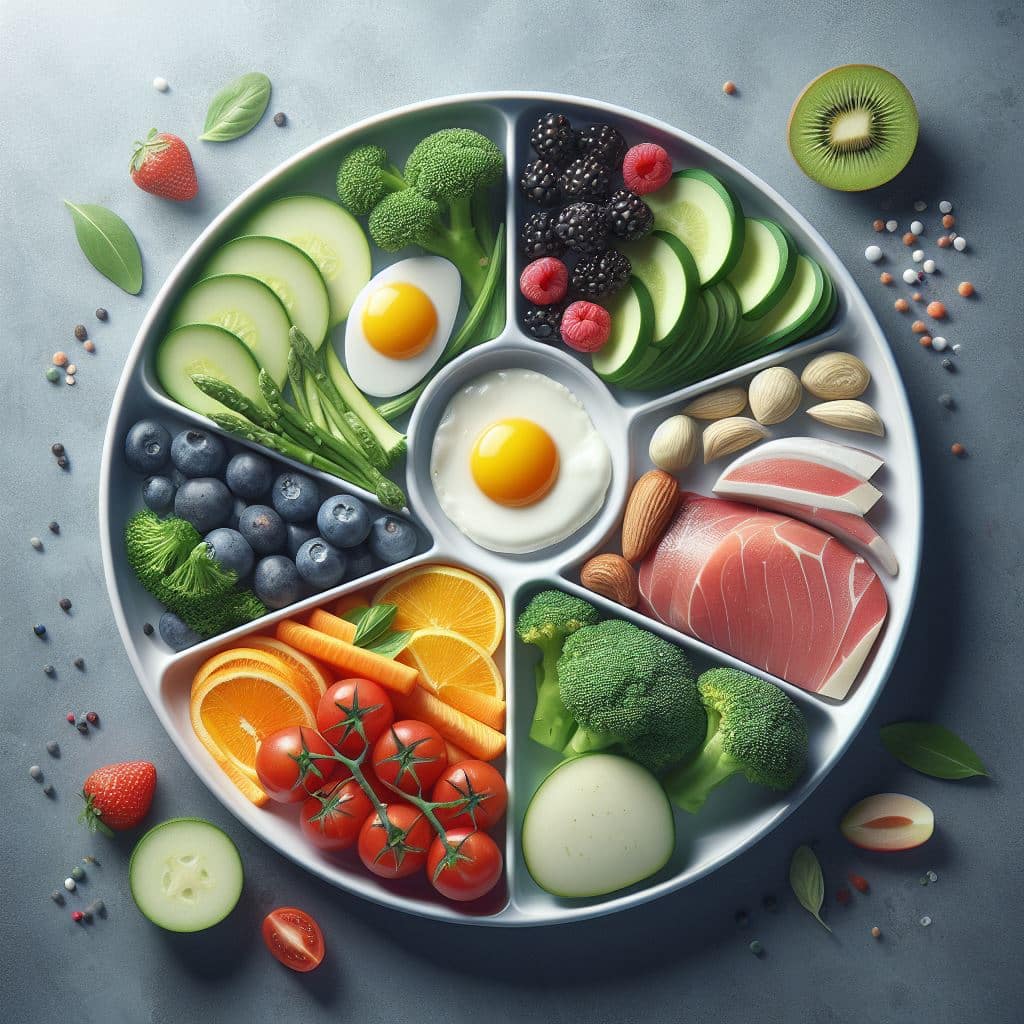Navigating the realm of portion control is crucial for managing type 2 diabetes. The challenges lie not just in what you eat but how much. Understanding the intricacies of portion control empowers you to make informed dietary choices, promoting optimal health.
Unraveling the Portion Predicament
In a world of oversized meals and super-sized snacks, portion distortion has become a significant contributor to the rising prevalence of type 2 diabetes. The modern diet often encourages indulgence, leading to an imbalance between energy intake and expenditure. This imbalance, coupled with sedentary lifestyles, contributes to insulin resistance, a key factor in type 2 diabetes.
The Impact on Metabolic Health
Portion control directly influences blood glucose levels. Large meals can overwhelm the body’s insulin response, leading to erratic spikes and crashes in blood sugar. Consistently elevated blood glucose levels can contribute to insulin resistance over time, exacerbating the challenges faced by those with type 2 diabetes.
Understanding the significance of portion control is the first step towards achieving stable blood sugar levels. It’s not about deprivation but about finding the right balance to support your body’s unique needs.
Benefits of Mastering Portion Control
- Stabilized Blood Sugar Levels: Proper portion control helps regulate glucose levels, preventing the sharp fluctuations that can be detrimental for those with type 2 diabetes.
- Weight Management: Portion control is a cornerstone of weight management. Maintaining a healthy weight is essential for diabetes management and overall well-being.
- Improved Insulin Sensitivity: By avoiding excessive food intake, you can enhance your body’s responsiveness to insulin, a key factor in managing type 2 diabetes.
- Enhanced Nutrient Absorption: Focusing on portion sizes allows you to diversify your diet, ensuring a broad spectrum of essential nutrients for overall health.
- Empowered Food Choices: Mastering portion control gives you greater control over your dietary decisions, fostering a positive relationship with food.
Understanding Portion Control Strategies
Effective portion control involves more than simply measuring food. It’s about developing a mindful approach to eating. Here are five key strategies to help you master portion control.
- Visual Cues: Use visual aids to estimate portion sizes. For example, a serving of meat should be about the size of a deck of cards.
- Plate Composition: Fill half your plate with non-starchy vegetables, one-quarter with lean protein, and one-quarter with whole grains or healthy carbohydrates.
- Listen to Your Body: Pay attention to hunger and fullness cues. Eat slowly and savor each bite, allowing your body time to signal when it’s satisfied.
- Smart Snacking: Opt for nutrient-dense snacks in appropriate portions. Pairing protein with fiber-rich options can help keep you fuller for longer.
- Mindful Eating: Minimize distractions during meals. Being present and mindful while eating helps prevent overeating.
| Portion Control Tips | Description |
|---|---|
| Use smaller plates | Trick your mind into satisfaction with a visually full plate. |
| Measure with precision | Invest in measuring cups and a kitchen scale for accurate portion sizes. |
| Divvy up snacks | Pre-portion snacks into small containers to avoid mindless munching. |
| Be mindful of sauces | Calorie-laden sauces can quickly turn a healthy meal into a high-calorie one. |
| Share when dining out | Splitting entrees or appetizers when dining out can help control portion sizes. |
| Opt for whole foods | Whole, unprocessed foods often come in naturally appropriate portions. |
Five Key Principles for Portion Control Mastery
Quality over Quantity: Prioritize nutrient-dense foods for their health benefits, focusing on quality rather than quantity.
Consistency is Key: Establish consistent meal timings to regulate your metabolism and support your body’s natural rhythms.
Hydration Matters: Adequate hydration is often overlooked. Sometimes, your body signals hunger when it’s actually thirsty.
Customize Portions: Tailor your portions to your individual needs, considering factors like age, activity level, and metabolic rate.
Seek Professional Guidance: Consult with a registered dietitian or healthcare professional to create a personalized portion control plan that aligns with your health goals.
Quality Over Quantity
The cornerstone of effective portion control is prioritizing the quality of the food you consume. Opting for nutrient-dense foods—those packed with vitamins, minerals, fiber, and other beneficial nutrients—can nourish your body and satisfy your hunger more effectively than foods high in empty calories. Incorporating a variety of whole foods, such as fruits, vegetables, lean proteins, whole grains, and healthy fats, ensures that every bite contributes to your health, allowing you to focus on the nutritional value of your meals rather than just the quantity.
Consistency is Key
Maintaining regular meal and snack times can significantly impact your body’s metabolic processes. Eating at consistent times each day helps regulate your body’s internal clock, supporting efficient metabolism and aiding in hunger regulation. This consistency helps prevent overeating and snacking on high-calorie, nutrient-poor foods, as your body becomes accustomed to receiving energy at regular intervals.
Hydration Matters
Understanding the signals your body sends is crucial for portion control, and this includes recognizing the difference between hunger and thirst. Adequate hydration is vital for overall health and can play a significant role in appetite control. Drinking water before meals can help you feel fuller, potentially leading to reduced food intake. Ensuring you’re well-hydrated throughout the day can also prevent misinterpreting thirst cues as hunger, helping you avoid unnecessary snacking.
Customize Portions
There’s no one-size-fits-all approach to portion sizes; what’s right for one person may not be appropriate for another. It’s important to customize your portions based on personal health factors, including your age, gender, activity level, and specific health goals, such as weight loss or muscle gain. Listening to your body and adjusting portion sizes to meet your hunger and nutritional needs is key to mastering portion control without compromising on satisfaction or nutritional requirements.
Seek Professional Guidance
For those unsure where to start with portion control or how to balance their nutritional needs, consulting with a registered dietitian or a healthcare professional can provide valuable insights. A dietitian can help you understand your body’s unique requirements and develop a personalized eating plan that incorporates appropriate portion sizes, taking into account any specific health conditions or dietary restrictions you may have. This professional guidance can ensure that your approach to portion control is both effective and aligned with your overall health objectives.
Incorporating these five principles into your daily routine can transform your approach to eating, leading to a more mindful, healthful, and balanced dietary pattern. By focusing on quality, consistency, hydration, customization, and seeking expert advice, you can master portion control and make informed choices that support your health and well-being.
Mastering Portion Control for Type 2 Diabetics: Your FAQs Answered
How can I control portion sizes without measuring everything?
Using visual cues, such as comparing food sizes to everyday objects, can help estimate portions without constant measuring.
Are there specific foods I should avoid for better portion control?
While no specific foods need to be entirely avoided, moderation is key. Be mindful of high-calorie, processed, or sugary foods.
Can portion control help with weight loss?
Yes, mastering portion control is integral to weight management, aiding in weight loss or maintenance.
Should I skip meals for better portion control?
Skipping meals can lead to overeating later. Opt for balanced, smaller meals throughout the day to maintain energy levels.
How can I deal with emotional eating when it comes to portion control?
Recognize emotional triggers and find alternative ways to cope, such as journaling, walking, or talking to a friend.
Citations
Anderson, J. W., Konz, E. C., Frederich, R. C., & Wood, C. L. (2001). Long-term weight-loss maintenance: a meta-analysis of US studies. The American Journal of Clinical Nutrition, 74(5), 579-584.
Franz, M. J., Boucher, J. L., Green-Pastors, J., Powers, M. A., & American Diabetes Association. (2012). Evidence-based nutrition principles and recommendations for the treatment and prevention of diabetes and related complications. Diabetes Care, 35(6), 1366-1374.
Ello-Martin, J. A., Ledikwe, J. H., & Rolls, B. J. (2005). The influence of food portion size and energy density on energy intake: implications for weight management. The American Journal of Clinical Nutrition, 82(1), 236S-241S.
Rolls, B. J., Roe, L. S., Meengs, J. S., & Wall, D. E. (2004). Increasing the portion size of a sandwich increases energy intake. Journal of the American Dietetic Association, 104(3), 367-372.
Wansink, B., & van Ittersum, K. (2007). Portion size me: downsizing our consumption norms. Journal of the American Dietetic Association, 107(7), 1103-1106.





